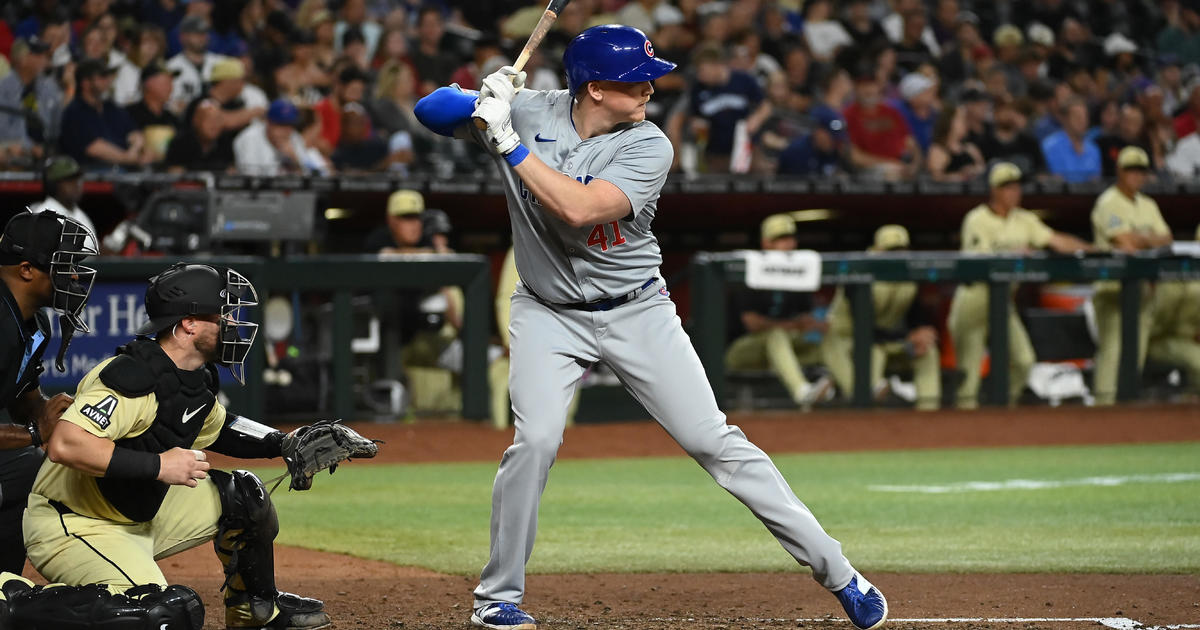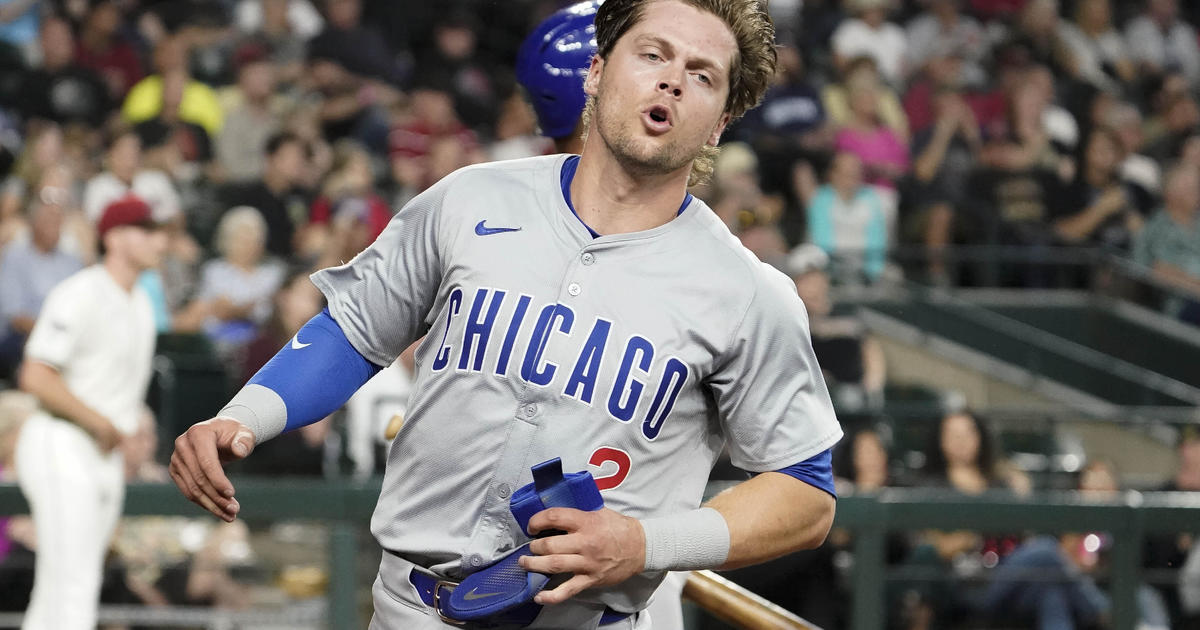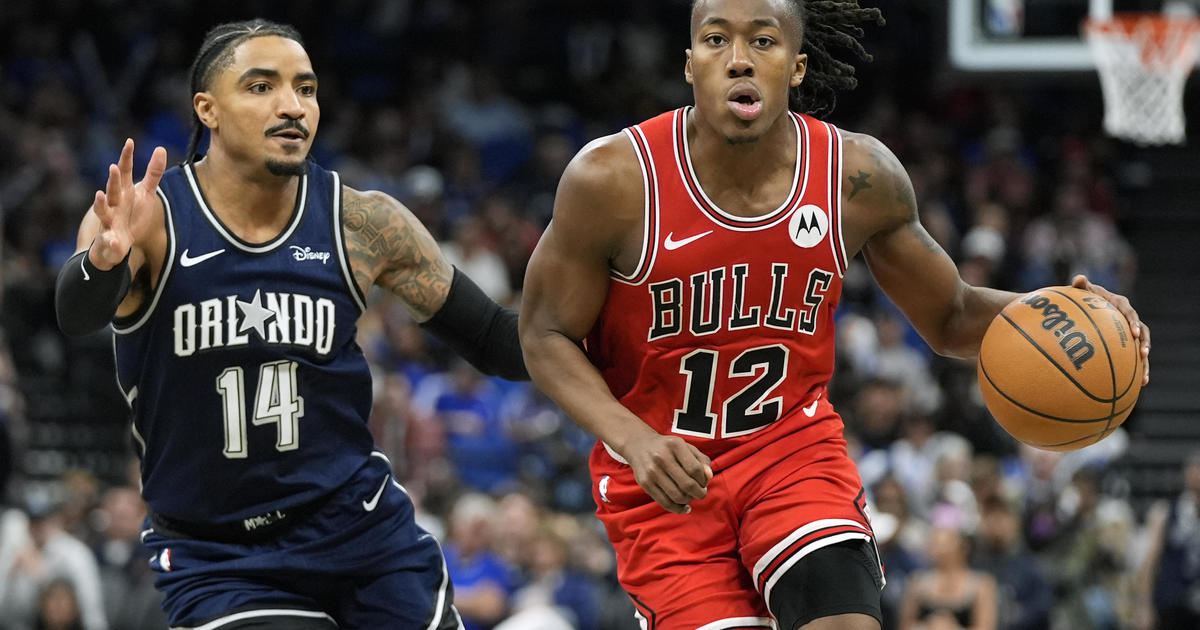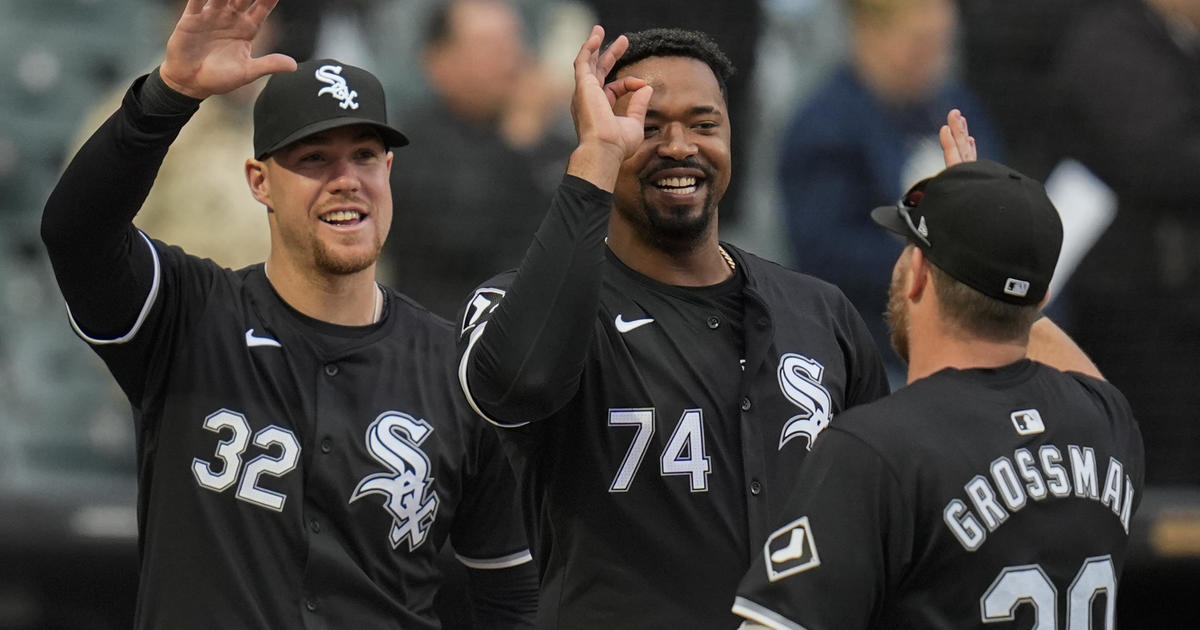Durkin: Impressions From Bears-Cardinals
By Dan Durkin--
(CBS) At the time his last pass left his hand Sunday afternoon, Bears quarterback Jay Cutler was 8-for-8 for 120 yards, a touchdown and held a perfect passer rating. His ninth throw didn't hit ground either, but Cutler did while chasing Cardinals safety Tony Jefferson, who returned the errant throw for a pick-six on what turned out to be the game-changing play in Arizona's blowout win.
The play elicited the same deja vu, "here we go again" feeling that has become commonplace during Cutler's time in Chicago. The Newtonian come down after any ascension.
The irony of this Cutler injury -- revealed to be a strained hamstring that's expected to keep him out at least two weeks -- is that fans who so often pine for the team to move on from him got a glimpse of what that image looks like without him. They wish they hadn't. Cutler's injury exposed the fragility of this Bears team and roster.
Everything came tumbling down on both sides of the ball. What had the appearance of a competitive game devolved into a 48-23 rout, dropping the Bears to 0-2 on the season.
To be fair, few teams in the league can withstand an injury to their starting quarterback and remain the same. In today's NFL, an inordinate amount of money and practice time is dedicated to the starting quarterback, whom everything is built around. The Bears are no exception.
With Cutler in the game, the Bears looked like a team that had an opportunity to be competitive for three quarters and hopefully be part of a one-possession game heading into the fourth quarter, in which anything can happen. Without him, they looked like they might be the worst team in football.
When the Bears have looked competitive, it has largely been schemed. Collectively, this team is starved for playmakers on both sides of the ball.
Offensive coordinator Adam Gase designed a game plan to spread the Cardinals out to slow down their second- and third-level pressure packages, then attacked the light boxes with inside-zone and read-option plays. The Bears scored touchdowns on two of their first three drives and appeared to be prepared to counter-punch with a high-octane Cardinals offense.
That plan disintegrated once backup quarterback Jimmy Clausen entered the game. Clausen was gifted with ideal field position -- the Cardinals' 22- and 12-yard line -- on two of his first three drives, yet the Bears offense settled for field goals both times.
On the nine Clausen-led drives, the Bears went fewer than 20 yards on six of them and had four punts, an interception and a turnover on downs. Clausen put no stress on the Cardinals defense, which crept closer to the line of scrimmage knowing it wouldn't be beaten deep. That relegated the Bears to a horizontal passing scheme similar to what they employed last season under Marc Trestman.
With Cutler out, Clausen will start this Sunday in Seattle for the Seahawks' home opener. Given Seattle's motivation and need for a win after a 0-2 start of its own, this could be one of the most lopsided games in the early portion of the season. The Bears will maintain their commitment to the run out of necessity and sheer survival but will find little success against the Seahawks' dominant front.
The Cutler injury illustrates how essential it is for the Bears to get a young prospect into the pipeline next offseason. But it also magnifies his importance to the team this season.
It also may prompt the team to keep Cutler for another season as their bridge quarterback. From a dollar standpoint, the Bears have already paid $48 million of the $54 million guaranteed. The final $6 million activates in the form of a roster bonus if he's on the roster as of the third day of the 2016 league year.
As bad as the offense looked without Cutler, the defense was -- and has been -- worse.
As it looked in the preseason, the unit lacks speed and playmakers at every level. Through two games, their defensive line has more passes broken up (two -- one apiece by Jarvis Jenkins and Jared Allen) than their secondary (one by Alan Ball). Their next quarterback sack will be their first.
Opponents can seemingly throw the ball at will down the field against the Bears, knowing the outcome will likely either be an explosive gain either via completion or a defensive pass interference. Through two games, they have surrendered league-high totals in passing touchdowns (seven) and yards via defensive pass interference calls (114).
Defensive coordinator Vic Fangio's preferred coverage has been man, using his cornerbacks in press-technique. Cornerbacks Kyle Fuller and Ball have struggled playing with their backs to the quarterback, showing little to no awareness of where the football is in flight.
Fuller's lack of development is particularly concerning. It's only 18 games into his NFL career, but he's playing with no confidence and appears to be miscast as a press-man cornerback. It's an unfortunate trend for someone the Bears used the 14th overall selection on in last year's draft, given the elite talent chosen immediately after him last season.
Fuller was replaced by Terrance Mitchell, a player taken six rounds after him in the 2014 draft. Coach John Fox is still searching for players he can trust, but if Fuller isn't part of that group, it's yet another in a growing list of early round draft failures. Perhaps this benching serves as a wake-up call for Fuller, who's failing due to poor technique just as much as he's failing physically.
An encouraging sign was the play of linebacker Pernell McPhee. He was a forceful edge-setter against the run and moved Carson Palmer off his launch point from multiple techniques and alignments.
Opposite McPhee, Jared Allen had a flash play on an athletic interception at the line of scrimmage, reading Palmer's eyes, then timing his jump perfectly to snare a pass heading over his pass rush lane. Plays like that have been sparse on defense.
Another area of concern through two games has been the play of the kickoff coverage unit. Against Green Bay, Chicago gave up three chunk returns. Against the Cardinals, the Bears gave up a 108-yard touchdown return to open the game. The kick from Robbie Gould was deep but low, and the coverage unit stacked in their lanes rather than being spread out.
Kickoff returns are similar to a long running play, so it's essential for the coverage team to build a wide fence then squeeze down. Perhaps it's the collection of players the Bears are using, but something needs to be fixed on this group. The defense is struggling enough on its own, let alone on a shorter field.
From the day the schedule was first released, the Bears' slate looked brutal. Three straight games against 2014 NFC playoff teams to open the season is serving as a measuring stick and a reminder of just how far away the Bears are from being a playoff team.
Dan Durkin covers the Bears for CBSChicago.com and is a frequent contributor to 670 The Score. Follow him on Twitter at @djdurkin.



